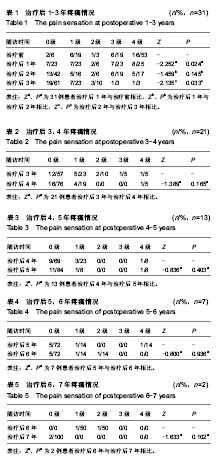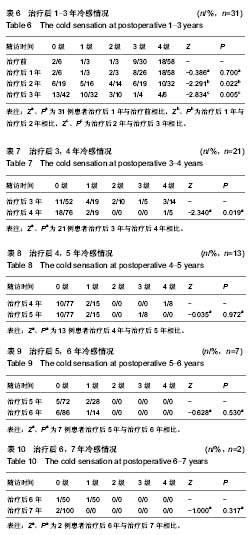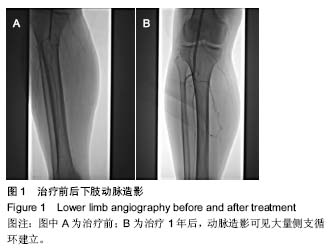|
[1] 中华医学会外科学分会血管外科学组.下肢动脉硬化闭塞症诊治指南[J].中华医学杂志,2015,95(24):1883-1896.
[2] Nikeghbalian S, Pournasr B, Aghdami N, et al. Autologous transplantation of bone marrow-derived mononuclear and CD133(+) cells in patients with decompensated cirrhosis. Arch Iran Med. 2011;14(1):12-17.
[3] Honmou O, Houkin K, Matsunaga T, et al. Intravenous administration of auto serum-expanded autologous mesenchymal stem cells in stroke. Brain. 2011;134(Pt 6):1790-1807.
[4] Connick P, Kolappan M, Crawley C, et al. Autologous mesenchymal stem cells for the treatment of secondary progressive multiple sclerosis: an open-label phase 2a proof-of-concept study. Lancet Neurol. 2012;11(2):150-156.
[5] Lu D, Chen B, Liang Z, et al. Comparison of bone marrow mesenchymal stem cells with bone marrow-derived mononuclear cells for treatment of diabetic critical limb ischemia and foot ulcer: a double-blind, randomized, controlled trial. Diabetes Res Clin Pract. 2011;92(1):26-36.
[6] Zhao D, Cui D, Wang B, et al. Treatment of early stage osteonecrosis of the femoral head with autologous implantation of bone marrow-derived and cultured mesenchymal stem cells. Bone. 2012;50(1):325-330.
[7] 肖以磊,朱建新,李忠民,等.两种不同途径移植自体骨髓间充质干细胞治疗早期脊髓损伤疗效观察[J].中国医师进修杂志,2012, 35(14):24-28.
[8] 谷涌泉,张建,郭连瑞,等.自体骨髓干细胞移植治疗下肢严重缺血32例报告[J].中国临床康复,2004,8(35): 7970-7972.
[9] 吴孟超,吴再德.黄家驷外科学[M].7版.北京:人民卫生出版社, 2008:1816-1190.
[10] Sprengers RW, Moll FL, Verhaar MC. Stem cell therapy in PAD. Eur J Vasc Endovasc Surg. 2010;39 Suppl 1:S38-43.
[11] Isner JM, Asahara T. Angiogenesis and vasculogenesis as therapeutic strategies for postnatal neovascularization. J Clin Invest. 1999;103(9):1231-1236.
[12] Asahara T, Murohara T, Sullivan A, et al. Isolation of putative progenitor endothelial cells for angiogenesis. Science. 1997; 275(5302):964-967.
[13] Tateishi-Yuyama E, Matsubara H, Murohara T, et al. Therapeutic angiogenesis for patients with limb ischaemia by autologous transplantation of bone-marrow cells: a pilot study and a randomised controlled trial. Lancet. 2002;360(9331): 427-435.
[14] 吕铁明,黎成金,罗芳,等.自体骨髓间充质干细胞联合外周血单个核细胞治疗下肢动脉闭塞症一例[J].中华细胞与干细胞杂志:电子版,2012,2(1):41-42.
[15] 谷涌泉,张建,齐立行,等.自体骨髓干细胞和外周血干细胞移植治疗下肢缺血的对比研究[J].中国修复重建外科杂志,2007,21(7): 675-678.
[16] 谷涌泉,张建,汪忠镐.自体干细胞移植治疗下肢缺血临床转化的现状与未来发展[J].转化医学研究:电子版,2014,4(4):118-122.
[17] 郑曦,张弛.内皮祖细胞与骨髓单个核细胞移植治疗糖尿病下肢缺血大鼠的比较研究[J].医学临床研究,2014,31(12):2329- 2331,2336.
[18] 陈明卫,李燕萍,唐益忠,等.不同来源和移植途径的自体干细胞治疗糖尿病缺血性下肢血管病变的随机对照研究[J].中华临床医师杂志:电子版,2013,7(14):6418-6423.
[19] 赵晶,吕延伟.干细胞移植治疗下肢缺血性疾病40例[J].中国中医药现代远程教育,2013,11(3):60-61.
[20] 任超,刘小云,耿德勤,等.自体骨髓干细胞移植治疗下肢缺血性疾病的疗效观察[J].中国全科医学,2013,16(6C):2152-2156.
[21] 孟令军.自体骨髓造血干细胞在治疗下肢缺血性疾病中的应用[J].现代诊断与治疗,2013,24(9):2043-2044.
[22] 李茂,黄文.自体干细胞移植治疗严重下肢缺血[J].中国组织工程研究,2013,17(49):8602-8607.
[23] 虞桂平,刘长建,陈国强,等.自体骨髓单个核细胞移植治疗下肢动脉闭塞症[J].中国组织工程研究,2013,17(10):1773-1779.
[24] 李国剑,杨镛,杨国凯,等.自体外周血干细胞移植治疗血栓闭塞性脉管炎的临床应用[J].中国普外基础与临床杂志,2012,19(11): 1187-1190.
[25] 虞桂平,王忠.自体骨髓干细胞移植治疗下肢缺血性疾病[J].中国组织工程研究,2012,16(14):2625-2628.
[26] 田玉峰,闫波.利用自体骨髓干细胞移植治疗下肢缺血性疾病9例[J].宁夏医科大学学报,2012,34(4):383-384.
[27] 吴峰阶,王巧云.下肢严重缺血的干细胞移植治疗[J].中国组织工程研究与临床康复,2011,15(32):6060-6063.
[28] 田玉峰,闫波,叶丹,等.自体骨髓干细胞移植治疗下肢缺血性疾病9例[J].中国血管外科杂志:电子版,2011,3(4):238-239.
[29] 谷涌泉,张建,齐立行,等.自体骨髓干细胞和外周血干细胞移植治疗下肢缺血的对比研究[J].中国修复重建外科杂志,2007, 21(7): 675-678.
[30] 王颖慧.骨髓干细胞移植治疗大鼠糖尿病足促进血管新生的初步实验研究[D].大连:大连医科大学,2012.
Liu K, Ji K, Guo L, et al. Mesenchymal stem cells rescue injured endothelial cells in an in vitro ischemia-reperfusion model via tunneling nanotube like structure-mediated mitochondrial transfer. Microvasc Res. 2014;92:10-18. |


